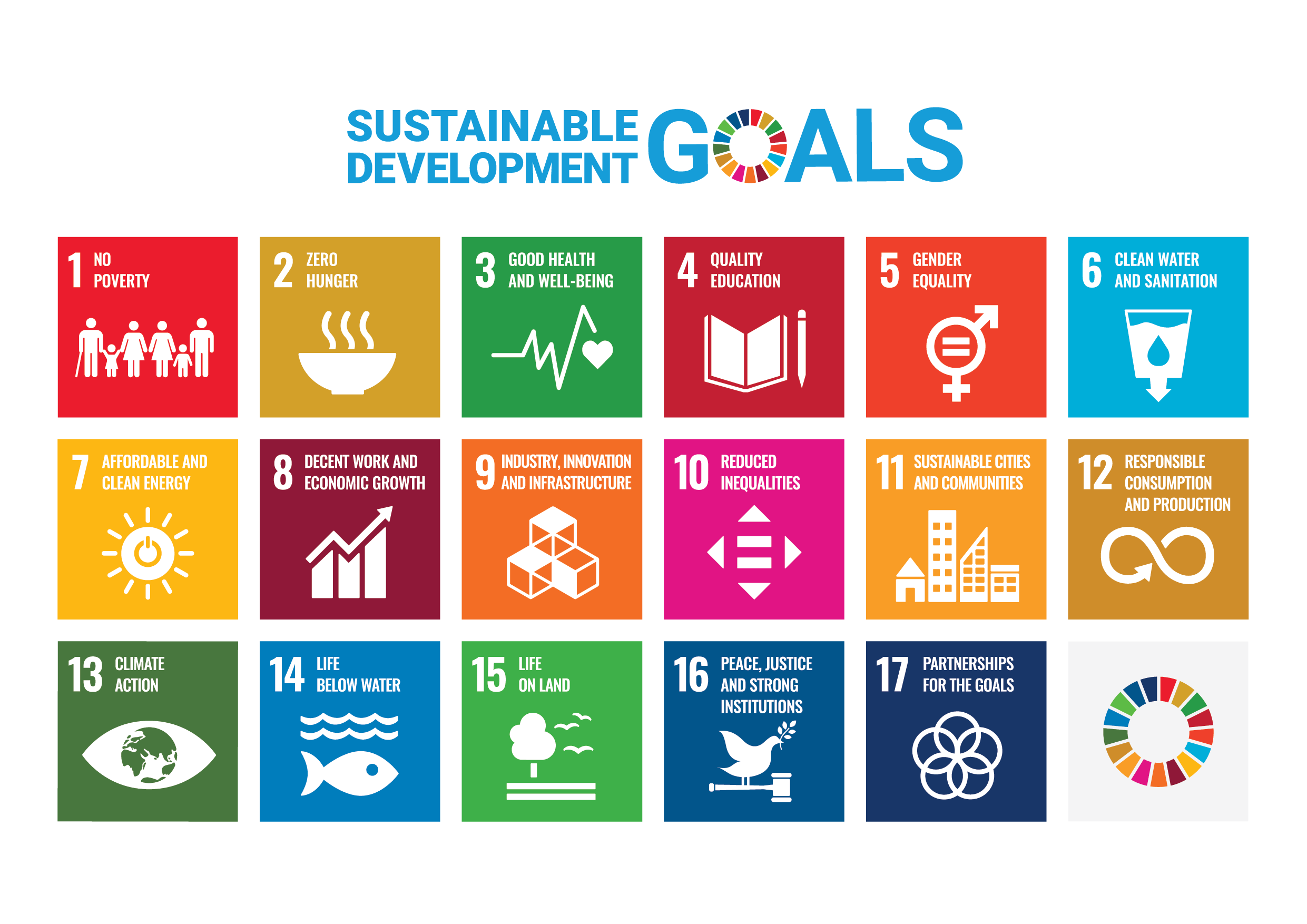The 2030 Agenda for Sustainable Development
- All United Nations Member States adopted the 2030 Agenda for Sustainable Development in 2015. The agenda guides the promotion of sustainable development over the period 2016–2030. The goals for sustainable development aim at ending extreme poverty and securing sustainable wellbeing.
- The goals of UN’s 2030 Agenda for Sustainable development are to end extreme poverty and to reach sustainable development where the environment, economic growth, and human wellbeing are considered with equal care.
- Sustainable development is not only an environmental issue, but all its subdivisions – the economic, cultural, and social – are important.
In total there are 17 sustainable development goals (SDG):
 The steering groups of the theme programmes have chosen the key sustainable development goals for their respective thematic programmes. The goals also include 200 sub-goals that function as indicators and parameters. The goals and indicators/parameters chosen for the theme programmes are listed below.
The steering groups of the theme programmes have chosen the key sustainable development goals for their respective thematic programmes. The goals also include 200 sub-goals that function as indicators and parameters. The goals and indicators/parameters chosen for the theme programmes are listed below.
A happy and competent Vaasa
Chosen indicators for monitoring
3: Good health and well-being:
- Difficulties in talking to parents
- Anxiety of young people
- Physical exercise promotion policy
- Health and welfare coefficient
- Children placed in care or emergency placement
- Weak physical functioning of children
- Weak physical functioning of young people
4: Quality education:
- Publicly paid early childhood education attendance rate
- Educational level index
- Pupils regularly being bullied
10: Reduced inequalities:
- Gini coefficient
- Life satisfaction of young people
- Youth unemployment
Attractive Vaasa
Chosen indicators for monitoring
9: Industry, innovation and infrastructure:
- New businesses
- Investments in research and development
11: Sustainable cities and communities:
- Grocery store attainability
- Degree of urbanization
- Urban population density
- Nationally significant man-made cultural environments
- Public transport viability
Climate neutral Vaasa 202X

Chosen indicators for monitoring
7: Affordable and clean energy:
- District heating prices
- Electricity consumption of service and construction sectors
- Renewable electricity capacity
11: Sustainable cities and communities:
- Biogas filling stations
- Air quality (NO2)
- Electric vehicle charging points
- Alternative fuel type car stock
13: Climate action:
- Greenhouse gas emissions per capita (CO2-report)
- Greenhouse gas emissions for residential sector
15: Life on land:
- Carbon stock of forest biomass
- Carbon stock of forest soils
- Forest growth.



